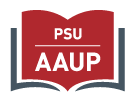Higher Ed’s Biggest Problem: What’s It For?
The Chronicle of Higher Education
January 24, 2013
By Jeff Selingo
The release this week of a bill of rights for learning in the digital age was criticized by some who said the document had been put together by a group that didn’t include the very people it is meant to protect: students.
The problem is, there is no traditional learner anymore. What’s more, we no longer even have a common definition of “higher education.” The lack of consensus about what the higher-education system in the United States should be producing is largely to blame for the pressures facing colleges and universities today, from lagging financial support to proving their value to students and parents.
We desperately need some sort of rallying cry, akin to the post-World War II period of the GI Bill, the late-1950s space race, or the introduction of the modern financial-aid programs with the first Higher Education Act, in 1965. The lack of consensus, which dates back several decades now, has resulted in a lack of public support for higher education, especially public colleges and universities.
Take flagship institutions, for example. As those campuses have relied less on public subsidies, their missions have shifted, especially when it comes to the number of in-state residents they serve.
President Obama has attempted to start a national dialogue by calling for the United States to lead the world in its proportion of people with college credentials. While getting students to complete a degree or certificate rather than just accumulate credits is a worthy goal, simply pushing more people through colleges and universities is not the definition of a successful higher-education system in the minds of most experts.
What is needed to truly serve the students of the future—and where state and federal leaders could really lend a hand—is to make the system more flexible for the next generation of learners and the institutions that serve them.
Despite all the talk about how today’s traditional student is yesterday’s nontraditional student, we still have a financial-aid and regulatory system built on a one-size-fits-all model, with 15-week semesters and credit based on time spent in a classroom seat. As a result, it is difficult for institutions to consider new ways of serving the diverse needs of today’s students.
My concern with all the news-media attention MOOCs are getting right now is that it is crowding out informed discussions of other innovative solutions to improve learning and control costs. One model that is getting scant attention, for instance, despite growing interest from traditional universities, is competency-based degrees.
This year three traditional universities—Northern Arizona, Southern New Hampshire, and the Wisconsin system—are experimenting with degrees based on competencies. Officials at all three institutions believe a program based on what a student knows rather than seat time is the only way to begin clearing the logjam of time-pressed adults who need a postsecondary education. Building the programs, however, has required those officials to work alongside their accreditors and the Education Department to get around a myriad of rules.
Those rules, of course, are designed to protect students and attach integrity to a college degree. But surely we can build a system that is both flexible and accountable. Otherwise there is little incentive for college leaders to follow a different path than the institutions ahead of them, or to look radically different.
“Our students have all the information that we have as professors,” says Aaron Brower, special assistant to the president of the University of Wisconsin system (and a former professor on the Madison campus). “So there is no premium on access to information.”
Indeed, the whole notion of how students acquire information, toggling between devices and sources and working collaboratively, has transformed the learning process. The question now is how to build an educational system around this new information ecosystem. “It gives us the chance to put learning outcomes first and provides the opportunity for individual instruction,” Brower says.
It also gives us the chance to build consensus around a diverse higher-education system that is flexible and responsive—yet accountable—to a generation of learners where one mode of teaching no longer fits all and where face-to-face, hybrid, and online-only education can perhaps peacefully coexist.
